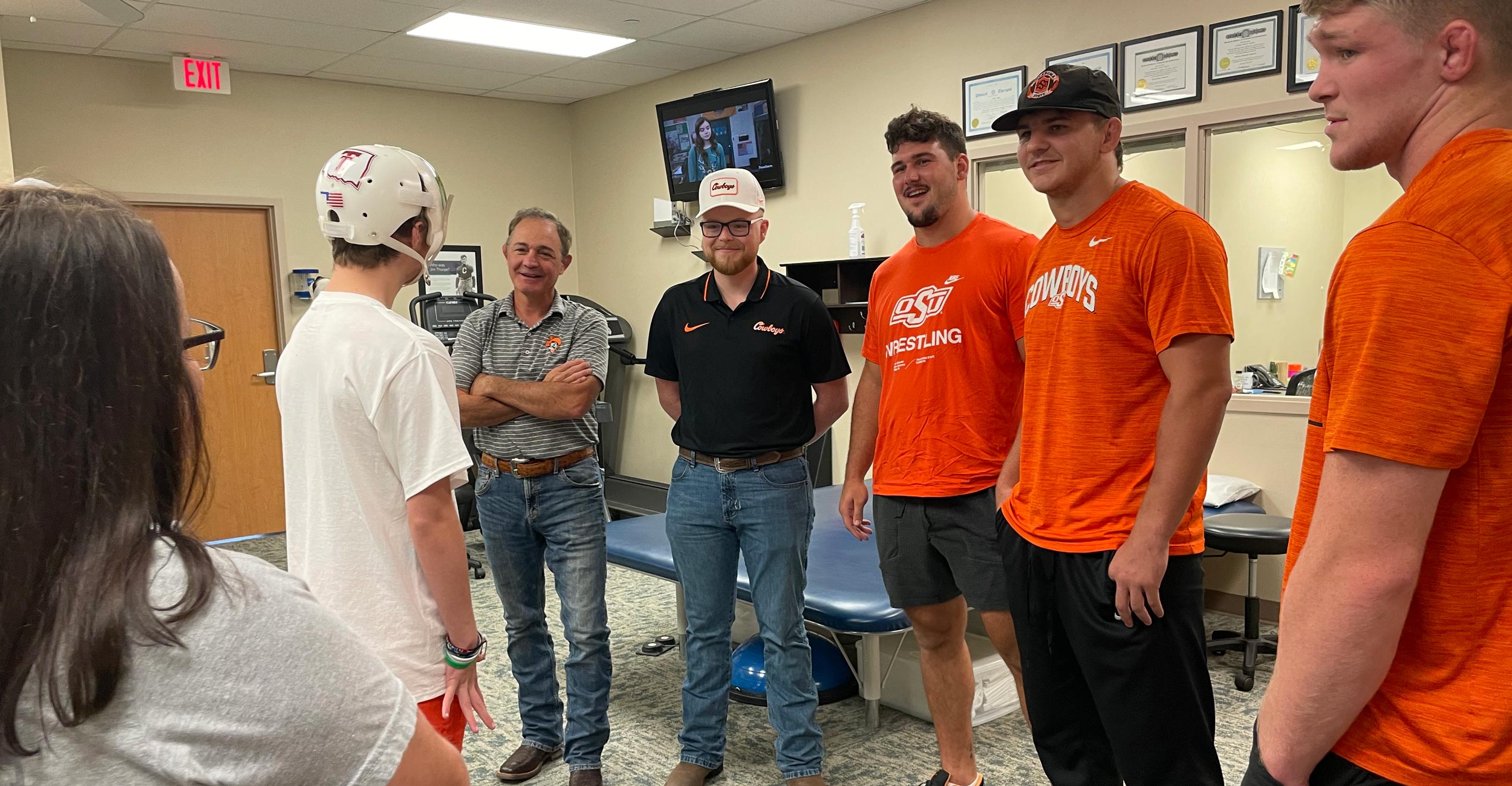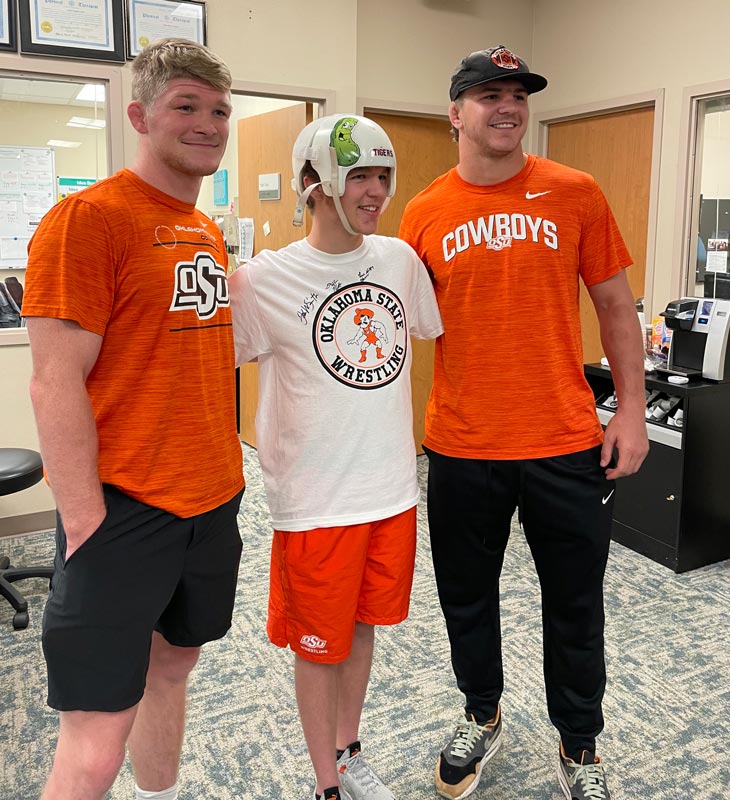
OSU wrestlers and trainers visit teenage wrestler in rehabilitation following rare adolescent stroke at summer camp
Monday, September 18, 2023
Media Contact: Jane Braden | Gooden Group Managing Director | 405-818-1905 | jane@goodengroup.com
Mother of 14-year-old Tuttle wrestler wants every parent, teacher, coach and trainer to recognize the symptoms of a stroke in youngsters
A Tuttle, Oklahoma, mother is sounding a cautionary alarm about the dangers of stroke in adolescents after her son collapsed at a summer wrestling camp.

Valorie Champion beamed as members of the OSU wrestling team, along with team coach John Smith, visited her 14-year-old son’s physical therapy session Thursday at INTEGRIS Health Jim Thorpe Rehabilitation Center in Yukon, but she didn’t forget her mission to discuss signs of stroke in young people. Smith and the team were impressed with Luke Champion’s hard work, determination and progress in the two months since his stroke.
In July, Champion was watching Luke finish and win his match at the Oklahoma State University Technique Wrestling camp in Stillwater this summer when she noticed he appeared to lie down and fall asleep on the arena mat. She rushed to his side and roused him because he had another match. She quickly realized his face had a droop, his speech was slurred and he couldn’t balance on his feet. She called for help.
OSU wrestling athletic trainer Nick Goldstein was manning the first aid station in the middle of the arena when several boys came running up to him screaming, “This kid is having a stroke!” Goldstein rushed to the boy’s side to assess the situation and quickly saw the droop and speech slur Valerie had noticed along with weak arm movement. He immediately called 911.
Stroke is a brain attack and a 911 emergency. The EMS team arrived in four minutes and took the injured wrestler to Stillwater Medical Center. Luke underwent a CT scan and then was quickly rushed to the University of Oklahoma Medical Center in Oklahoma City where he received the standard drug for emergency strokes called TPA: Tissue Plasminogen Activator. TPA is a clot-busting drug that can restore blood flow and significantly reduce the symptoms of a stroke if given rapidly, within 4.5 hours.
He also underwent a thrombectomy surgery to remove a number of small blood clots in the brain and a craniotomy to relieve brain swelling. Luke continues to undergo physical therapy as he regains the motor function he lost during the stroke. Goldstein was thrilled to see Luke’s progress Thursday, and, like his mother, is hopeful that Luke’s story will help inform others.
“OSU athletic trainers were super awesome, recognized the problem, allowed me to stay beside Luke while they immediately got emergency services into the gym,” Valorie said.
Valorie knew the symptoms of stroke and the acronym to remember the signs of a person experiencing stroke: BE FAST — balance, eye movement, face drooping, arm weakness, slurred speech and time.
“It’s important that parents, coaches, trainers, school nurses and local responders consider stroke in adolescents when they see these symptoms,” Valorie said. “Parents, trust your gut if you think you see stroke symptoms in your child and get them to ER first and decide if you did the right thing later.”
Goldstein said being prepared is the motto of OSU athletic training.
“Every day, I run the emergency response plans through my head,” Goldstein said. “Have a plan, practice the plan and be prepared to follow that plan immediately. Every minute you don’t know what to do could be a lost minute in someone’s life.”
Lance Walker, the Rick and Gail Muncrief Executive Director of OSU’s Human Performance and Nutrition Research Institute, said hospitals have seen a significant jump in the number of young patients admitted for stroke treatment.
“The latest research is telling us you can’t be too young to have a stroke,” Walker said. “As many as 10% of all strokes today are in adults and adolescents younger than 50. The key to survival is recognizing the symptoms and getting the person to a hospital fast. It’s alarming to know that a third of adults under the age of 45 don’t know these common symptoms; changing that dynamic will save lives.”
